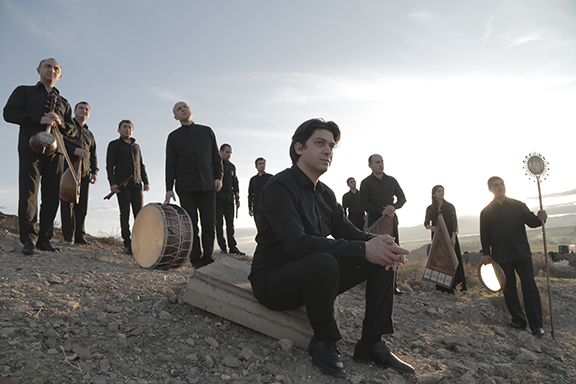
The Gurdjieff Ensemble. (Source: Andranik Sahagyan)
Every culture has a future if it lives and breathes, and it can arouse international interest if what it presents is of universal value. Armenian music is deep and universal, and it can provide innumerable keys to understanding the bygone cultural treasures of ancient civilizations.
The recent release of the Gurdjieff Ensemble’s new CD, Komitas, is an event of such caliber; one whose vectors stretch into the past, and well into the future. Published by the German ECM Records, a record label recognized globally as a leading publisher of contemporary music, the CD is accompanied with a 30-page comprehensive booklet that features Levon Eskenian’s analyses of the origins and principles of Komitas’ music in line with annotations written by Tigran Mansurian, the prominent composer.
The album is a wonderful opportunity to expose the world to Armenian music at large, and the music of Komitas in particular. As such, not only can it serve as a source of inspiration for many Armenians but also a unique point of departure for educating the younger generations and instilling in them love and appreciation for their cultural background.
As such, the CD is the most extensive recourse to the music of Komitas ever performed.
The CD features millennia old Armenian music, and among them, group dances we have inherited from both the Eastern and Western parts of Armenia; ”˜Karno het u arach,’ ”˜Karno shoror,’ ”˜Msho shoror,’ pieces for children, as well as lullabies, folk and spiritual songs. All the pieces are performed on traditional Armenian instruments: duduk, pogh, tar, dap, kamancha, tmbuk, zurna, burvar, bell, and others.
All the arrangements of Komitas’ work have been performed by Levon Eskenean, artistic director of the ensemble. In his arrangements, he was guided by the principle and ideal of authenticity and the desire to cast a glance into the past which, being retrospective, could also be reconstructive. To this end, he carefully consulted Komitas’ writings and followed his instructions as far as instrumental styles are concerned (tar, duduk, pogh, dap, tmbuk, zurna etc.).
Shortly after its release, the album attracted the interest as well as the appraisal of the international media and professional musical circles (in Europe, US and Japan), whose ample reviews characterized the CD as an important cultural artifact where the ensemble is breathing new life to the Armenian music, which was collected at the beginning of the 20th century. This is a substantial piece of musical archaeology and resuscitation.
The Uk based Songlines Magazine has the album among its top 10 albums from 2015.
The CD is now available for purchasing in almost all the countries around the world, and also online. The name of the CD is “Homitas, Gurddjieff Ensemble, Levon Eskenian”